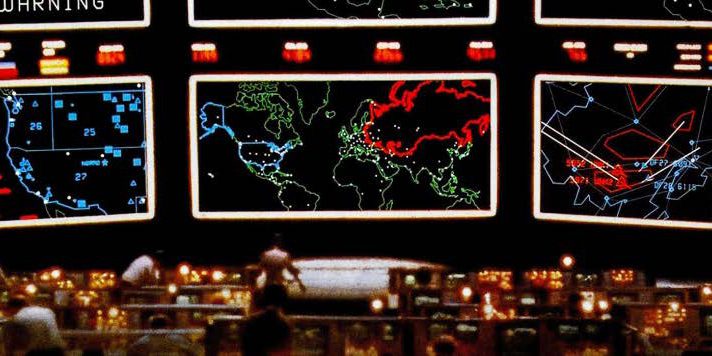Hybrid Adjudication
The three different divisions described, that can be used to divide up adjudication methods, each have a variety of strengths and weaknesses. In each case the different options are suggested by necessity, often, rather than by choice. In cases where there are desirable strengths in the option not adopted, this means that possible benefits are being missed in discovery wargames. An example is in the area of computerized wargame systems, as compared to a wargame system that is designed to support a tabletop event. In a tabletop event, it is more likely that a less rigid adjudication method might be chosen, also that the complexity of the system will be kept manageable, so more likely that a higher level of aggregation will exist in the adjudication method. In a computerized event, it is more likely that the whole event is more rigid (including adjudication) because of the needs of the digital system. This includes data modeling before the event, having a data driven system running on the computer, and supported by technical staff. But it also means that the computer is able to calculate much more detailed result, giving more data to the players (a curse and a blessing) about the adjudication as it unfolds. In looking at these two what-if types of events, there are both limitations and benefits that arise in each.
A design is possible that uses aspects of several different methods combined, to take advantage of different solution sets to the adjudication problem, providing a maximized set of strengths. Technology alone is likely not to be the answer to an improved system, however it might provide some measure of control over negative aspects that could keep different techniques from combining. For instance, if a system that could combine the flexibility of a tabletop system (simple in-stride execution of attrition/outcomes generation, ease of restructuring operations to allow flexible investigation of alternatives, minimal requirement of technical support during event, etc.), with the values of a computerized system (detailed results, available to any members of the wargaming event that are desired, quickly perform complex calculations, etc.) it is not likely that proponents of either style of adjudication would have cause to complain.
One such example could be a game system that mimicked a tabletop wargame, but was enabled on a large digital, touch monitor. A course of action for military units could be entered, with typical information for a contingency plan (when units arrive, what movement orders they will follow, lines of operation, lines of communication, and so forth), but as the time of the wargame unfolds, a player would be able to interact with the touch screen, either to retrieve information, or to enter alternatives. A referee would be able to, by touch and drag, modify a situation that the game produces. It would allow for a wide variety of different adjudication methods, including being more, or less, rigid. It would allow for executing operations (operational plans, contingency plans, tactical decision games, etc.) such that units could be given a course of action, but interrupting or modifying that course of action could be done directly by a player. Combat modeling could include a method that produces a range of likely results, and then a stochastic determination of which to apply would come into play, or a referee staff in a less rigid, more open style wargame could choose which of a number of different results would apply in a situation. Increased flexibility would be if the referee staff could choose to accept, modify, or ignore results from a combat encounter.
Further, consider a situation where several such tables, each mimicking the interactions with a tabletop wargame, were networked, so that the display on each could have fog of war introduced by the control/networking mechanism – so that information available to one set of players using a table, might not be available to another set of players. It begins to sound like a distributed simulation system used in many different LVC events, but the amount of detail and interaction is purposely kept below a threshold, to ensure ease of use, and maximum flexibility, without requiring technical staff.
Another example could be an actual tabletop system, where military unit markers (game pieces) would have recognizable codes (such as QR codes) that a smart phone or tablet could recognize, and allow a referee to snapshot a situation, draw a boundary around the units to be considered, and the digital adjudication system would calculate the results, and information would be stored, to be retrievable by anyone with a tablet, who had role-controlled access to information (such that red players could call up information about status of red units, but only limited information about blue units, for instance).
Both of these mentioned designs are in the early development stage at Georgia Tech Research Institute. It is likely, with the renewed interest in wargaming, that there are others in development elsewhere.


